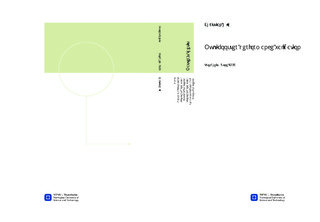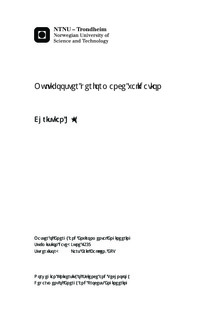| dc.description.abstract | The move into producing oil and gas from deeper water, and the desire to increase recovery from ageing reservoirs, is driving the demand for subsea process and boosting systems. Aker Solutions is extending it product portfolio with two new pump technologies to improve production of gas rich fields through use of multiphase boosting. The MultiBooster is a multistage pump with semi-axial impellers, and is designed to handle a wide range of GVFs. This thesis has focused on the evaulation of a multiphase performance prediction tool with specific interest at high gas volume fractions.Aker Solutions' current performance prediction model has been evaluated through a literature study. The gas tends to flow at a lower velocity than the liquid, causing drag between the phases and a performance degradation relative to single-phase operation. As more gas is introduced, gas bubbles will coalesce, causing separation of the fluids, and resulting in a higher degradation, instabilities, or even pump failure.Most of the performance prediction models for multiphase pumps found in the literature is of an empirical nature. These empirical models is only valid for the impeller designs and operating conditions in which they are based on, and fail when it comes to explaining the fundamental principles affecting the pump performance. It is believed that increased effort on computational fluid dynamics along with experiments and visualization will help to increase the knowledge in order to develop an accurate performance prediction model. The current performance prediction model is also of an empirical nature, and many simplifiactions are made that are inaccurate as the gas volume fraction is increased. More research has to be done on thermodynamic modeling, equations of state, and viscosity modeling. The development of the input data such as the two-phase multipliers has been studied. The two-phase work and efficiency factor should be sorted for density ratio, gas volume fraction, as well as specific flow rate.The HybridBooster was tested in order to map the performance of the semi-axial impellers, and verify the design of a gas tolerant radial impeller. Tests were conducted with single-phase and two-phase operation. The HybridBooster performed well under various operating conditions and above the gas volume fraction target. The test loop was however the limitation and was not able to obtain various inlet density ratios.Comparing the current performance prediction tool including input data from previous tests with the new tests showed that the input data needs to be updated. The system pressure should be varied in order to create two-phase multipliers at various density ratios. Single-stage tests does also have to be conducted in order to isolate the stage power consumption which is essential in the development of the two-phase efficiency factor. | nb_NO |

